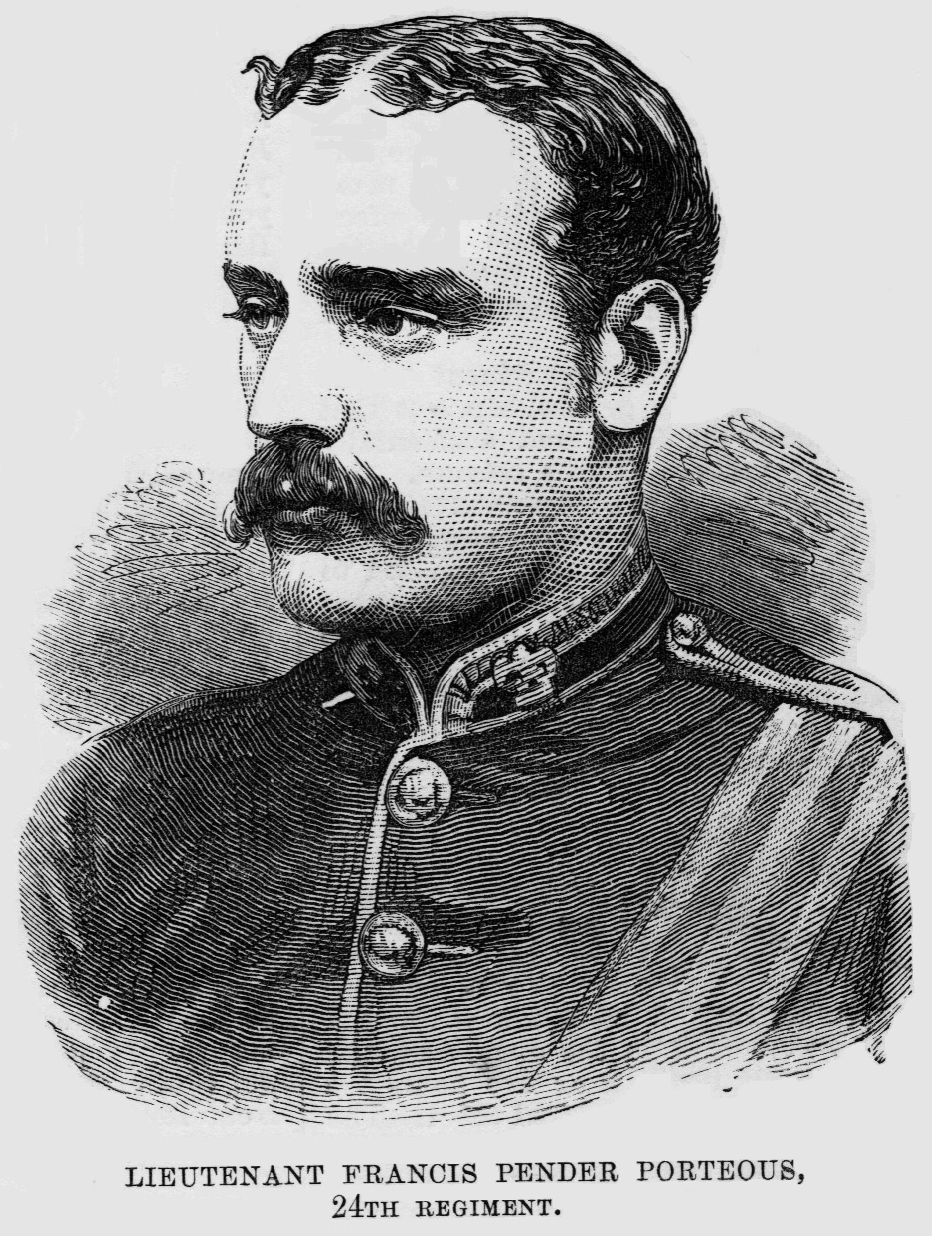LIEUTENANT FRANCIS PENDER PORTEOUS
1st Battalion, 24th Regiment of Foot
Battle of Isandlwana, Natal, South Africa
killed January 22nd, 1879
Francis Pender Porteous was aged 31, the son of James Porteous and Emily Kemble of Jamaica.
 |
|
The Battle of Isandlwana
The British, under the command of Lord Chelmsford, totally under-estimated the number of the Zulu forces ranged against them, and their tactical abilty. They were, in fact, surrounded and the Zulus used a classic pincer movement (known as "horns of the buffalo").
Chelmsford, not anticipating an attack, had divided his forces, moving about half the total number some miles to reconnoitre to the east in search of the main Zulu army, and leaving five companies of the 1/24th and one of the 2/24th (67 officers and 1,707 men) with two guns and a small native contingent, at Isandlwana under the command of Colonel Durnford, establishing what was to be a temporary camp.
However, the Zulu army of 25,000 warriors had outmanoeuvred Chelmsford, moving behind his force on to Isandlwana. When their huge force was discovered by a mounted patrol they launched their attack on the depleted British camp.
Six British companies were ranged at intervals along the course of the Nyogane Donga river, together with the Natal Native Contingent (NNC), below the Nqutu Heights plateau. The Zulu forces broke through their defences through sheer force of numbers, and on the orders of the camp commander the British spread out around the camp perimeter.
'A' Company was commanded by Porteous (although some sources say he was in temporary command of 'E' Company). Regardless, they initially stood their ground against overwhelming force of Zulus, but were eventually overrun.
At Isandlwana, the British suffered their worst defeat ever in the history of their Colonial warfare: the casualties amounted to 907 white soldiers and 471 of the 800 black soldiers fighting on the side of the British, a total of 1329 men.
When news of the catastrophic defeat reached home by telegraph, it stunned the British empire. The fact that the troops of a major European power, equipped with modern rifles and artillery, could be wiped out by native army with what amounted to stabbing weapons, was unthinkable. It helped to transform the nation's attitude towards warfare.
Porteous' body was never found. It probably lies in one of the mass graves that today litter the battlefield. Francis Pender Porteous was aged 31, the son of James Porteous and Emily Kemble of Jamaica.
|
|
|
|

![]()

